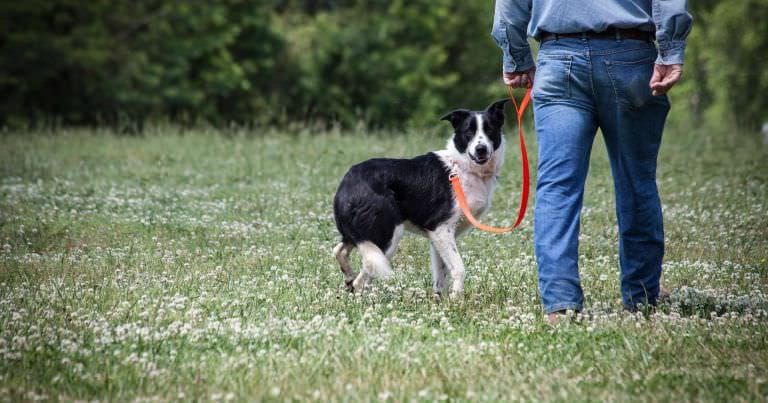How to train our dogs effectively?
The Rule of Five (not so much a rule but a perfect system)
How to create efficient progress training with your dog.
When training a behaviour with our dog, we need to know when to push our dogs and when to make it easier for them.
How can we create effective progress and maintain efficient dog training?
Science has proven that learning is most effective when the rate of positive reinforcement is high.
What is Positive Reinforcement in dog training?
First of all, before we start, a note on positive reinforcement. A positive reinforcer is commonly referred to as a reward.
It can be anything the individual learner thinks of as holding value. For example, food is a popular choice in dog training because it is easy and quick to deliver and then carry on training.
A reinforcer could also be your attention or playing with a toy. So long as it holds value for your dog, it could be used.
Read More on Positive Reinforcement in dog training.
Success is in planning for efficiency in dog training!
Setting our dogs up for success is essential, too. We achieve this by breaking the behaviour down into achievable sections. Also, by choosing a suitable environment for each stage of training. If you or your dog are struggling. Then, it is time to adjust your training plan!
See The Three D’s of Training for more on this.
How many are too many? Wages are important
Above all, when training our dogs, keeping the flow of reinforcers high is essential. Being consistent is also a factor if we want dependable behaviours. The five rule helps us judge when to raise the criteria or take the next step in our training goal. Similarly, it also helps us if we need to lower criteria and make things easier for our dogs to succeed.
How do I keep the efficient flow when training dogs?
Many years ago, I first encountered this type of system in a training demonstration by Jean Donaldson. Now, we have a basic understanding of training ethos. Let’s get back to the “Rule of Five”. This system is designed to give a clear and consistent way of judging:
It works like this:
We try five repetitions at the stage of the behaviour we are training. If our dog has a five out of five success rate, we move on to the next step. When a dog has a three or four out of Five success rate, we stay at this stage of training.
We reduce the difficulty and take a step backwards in our training plan for a dog with a two or below out of five success rate. It is as simple as that.
Let’s have a look at it in practice.
So, let’s look at that with three examples of adding duration to the sitting behaviour.
These show how we create efficiency in our dog training. In the examples below, our dog, “Bengy”, knows his sit cue and sits whenever he hears it.
Our goal is to increase the time this behaviour is held. So, first, he will move on; second, he will stick; and finally, we will make it easier for him.
Example 1: Bengy nails his duration
We do five repetitions of asking Bengy to sit and hold the position for six seconds.
Bengy holds the sit for six seconds every time and gets his reinforcer after each repetition.
We progress our training, and for the following five repetitions, we will try for Bengy to hold the sit position for eight seconds.
Example 2: Bengy needs some more practice
We do five repetitions of asking Bengy to sit and hold the position for six seconds.
Bengy holds the sit for six seconds, four out of the five repetitions. Bengy gets his reinforcer after each of the four completed repetitions.
We stick at our training stage, and for the following five repetitions, we will try for Bengy to hold the sit position for six seconds again.
Example 3: Bengy needs some easier step practice
We do five repetitions of asking Bengy to sit and hold the position for six seconds.
Bengy holds the sit for six seconds, two out of the five repetitions. Bengy gets his reinforcer after each of the two completed repetitions.
We take a step back in our training, and for the following five repetitions, we will try for Bengy to hold the sit position for three seconds.
Conclusion for efficient dog training
As we train our dogs, we focus less on always making things more difficult. Instead, pairing verbal cues with a high reinforcement rate is far more helpful and efficient.
Remember, our dogs are individuals and, like us, have good days and not-so-good days. So, take a flexible approach to your training and keep each session fun for everyone.



